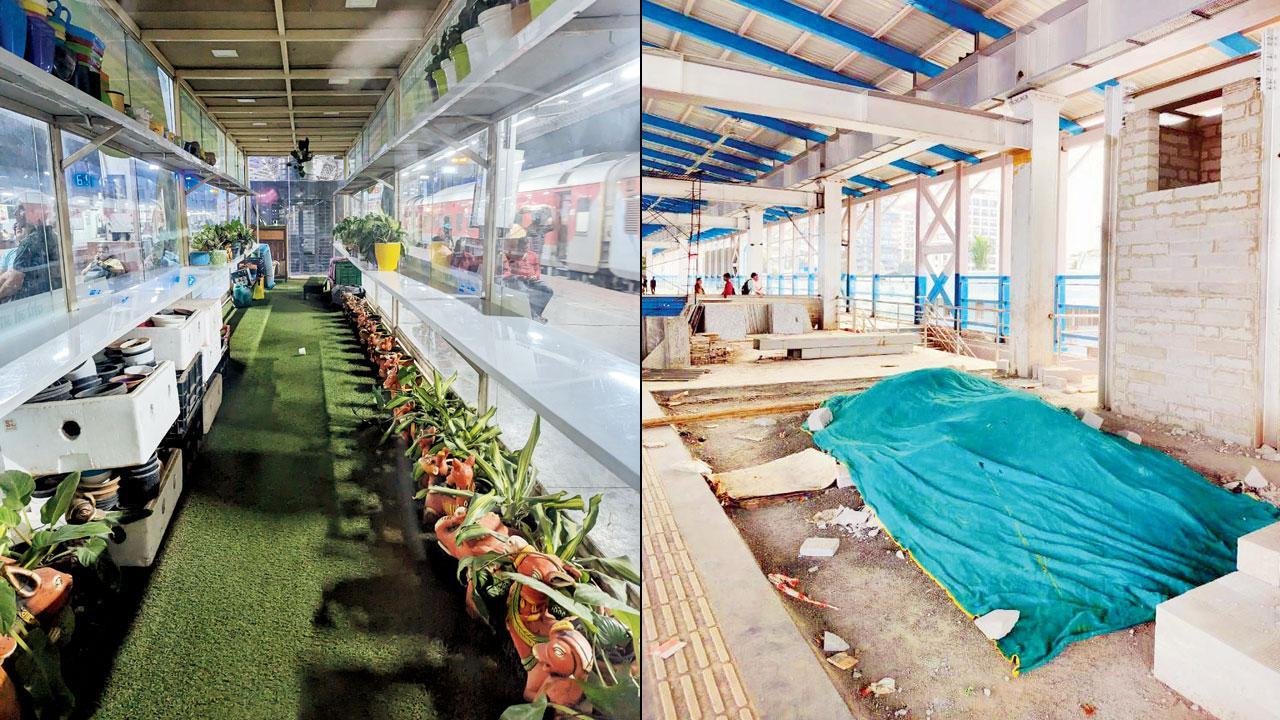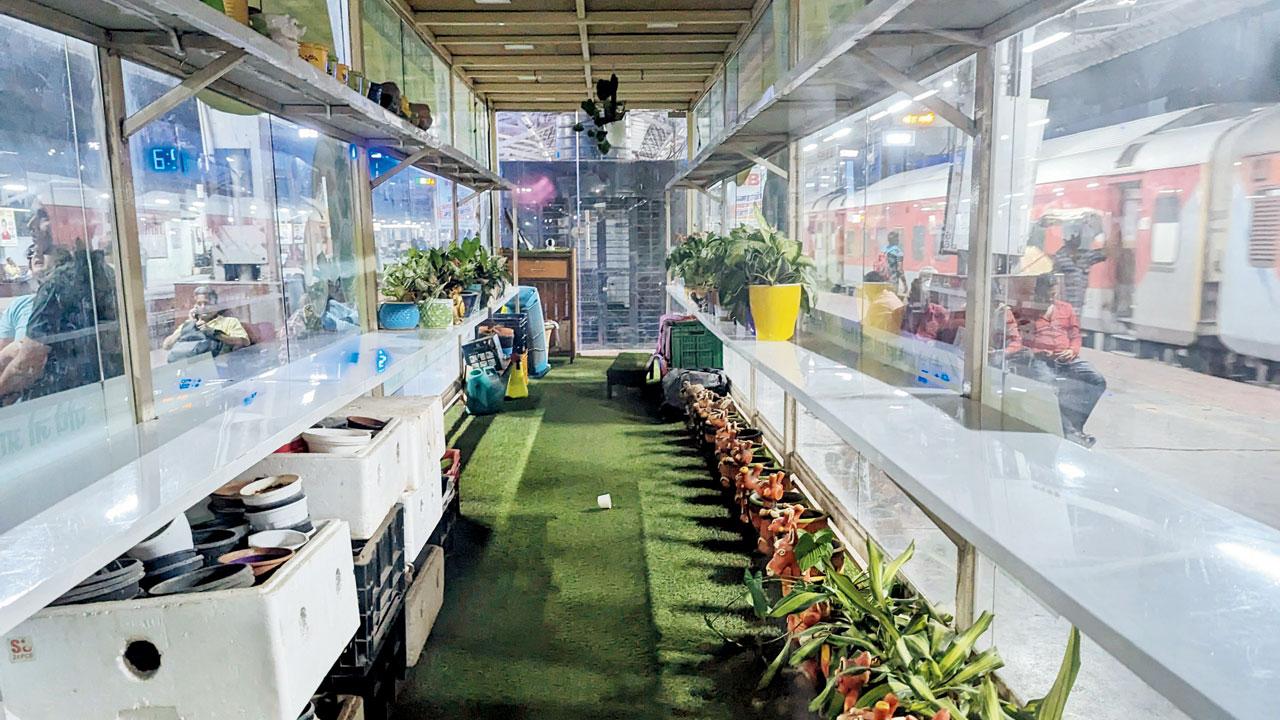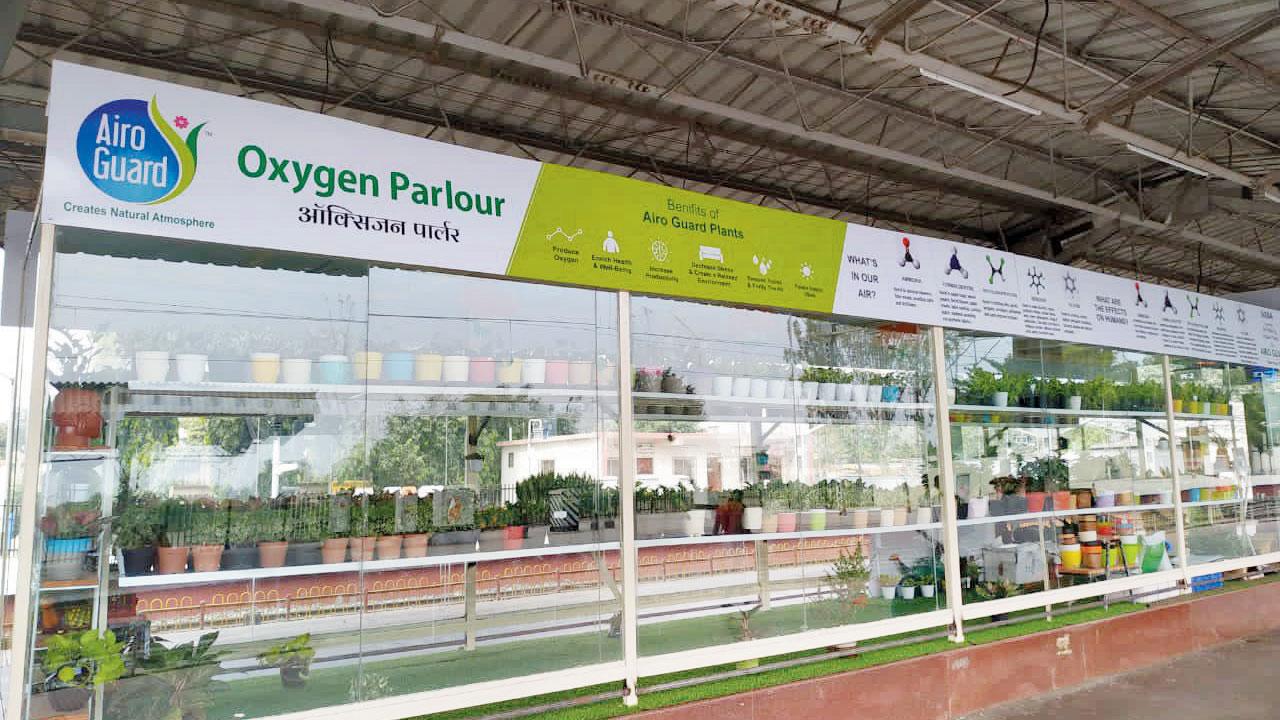Rlys exploring NASA-backed plants' potential to mitigate indoor pollution

An ‘oxygen parlour’ that has been set up at Nashik station; (right) the special green cloth used to cover debris at Khar station
Can air-filtering plants make a difference? The Railways’ previous collaboration with AiroGuard, a Nashik-based firm, in setting up an air-filtering plant using US’s National Aeronautics and Space Administration (NASA) data on plants known for generating pure air and oxygen, could offer some relief.
ADVERTISEMENT
Certified plants like bamboo palm, spider plant, devil ivy, dwarf date palm, Boston fern, Kimberley Queen fern and Chinese evergreen have been identified as beneficial.
 The ‘oxygen parlour’ at Nashik station
The ‘oxygen parlour’ at Nashik station
While NASA’s involvement in indoor plants might seem unexpected, in the late 1980s, they conducted a Clean Air Study to explore the air-purifying capabilities of plants. This study aimed to identify the best indoor plants for naturally removing harmful elements like benzene, formaldehyde, trichloroethylene, xylene, and ammonia, known to have adverse health effects.
Railway officials emphasised the study’s recommendation of having at least one plant per 100 square feet. Despite the age of the NASA Clean Air Study, it remains widely regarded as the most comprehensive and accurate research to date.

Environment activist Subhajit Mukherjee, ambassador for Maharashtra government’s Majhi Vasundhara Abhiyan, expressed a nuanced view, stating that while indoor plants can contribute greenery, they offer a limited solution to the substantial pollution problem. Factors such as plant size, water availability, temperature, humidity and more influence their performance.
Mukherjee added, “Yes, they definitely perform better, but they cannot be the only solution. There have been numerous studies from NASA, and most of them suggest similar kinds of plants over the last 10 years.” Railway officials confirmed the continued functionality of the ‘oxygen parlour’ at Nashik station, allowing commuters to breathe in cleaner air and purchase plants at a standard rate. An official mentioned, “A rate card would be put up as per the available plant classes.”
 Subscribe today by clicking the link and stay updated with the latest news!" Click here!
Subscribe today by clicking the link and stay updated with the latest news!" Click here!







